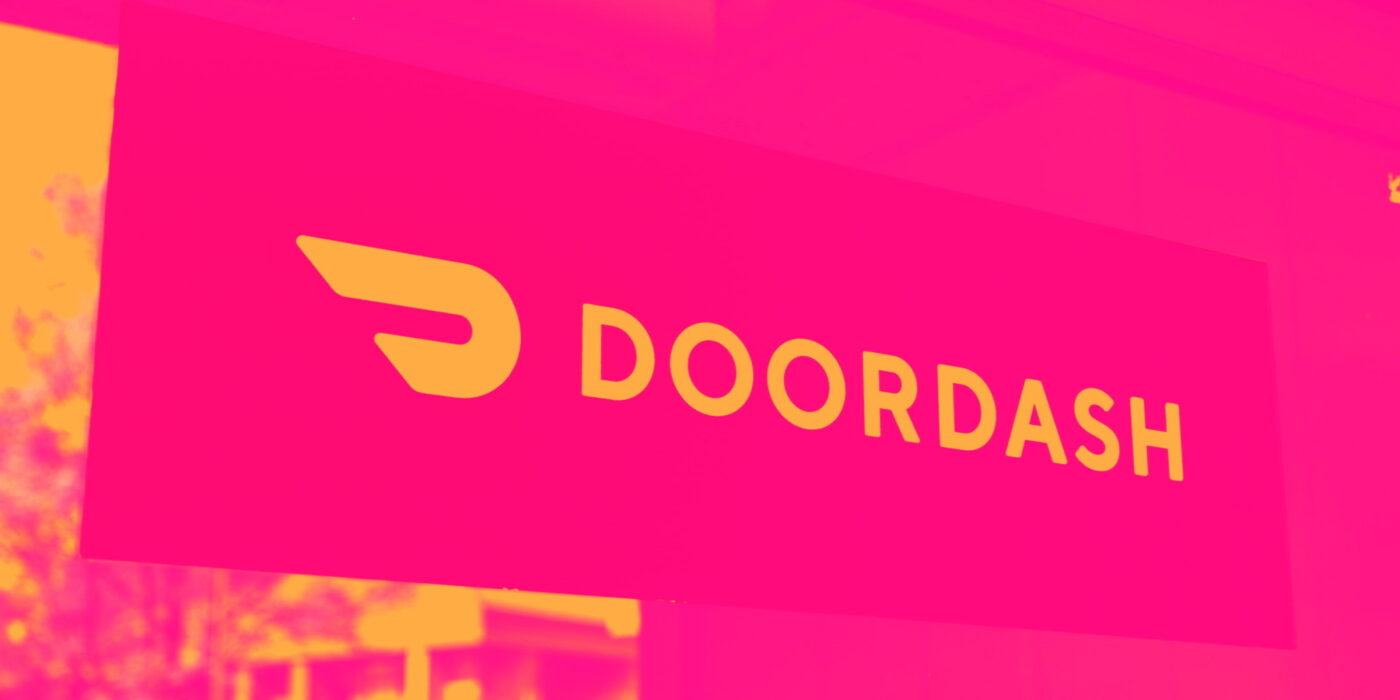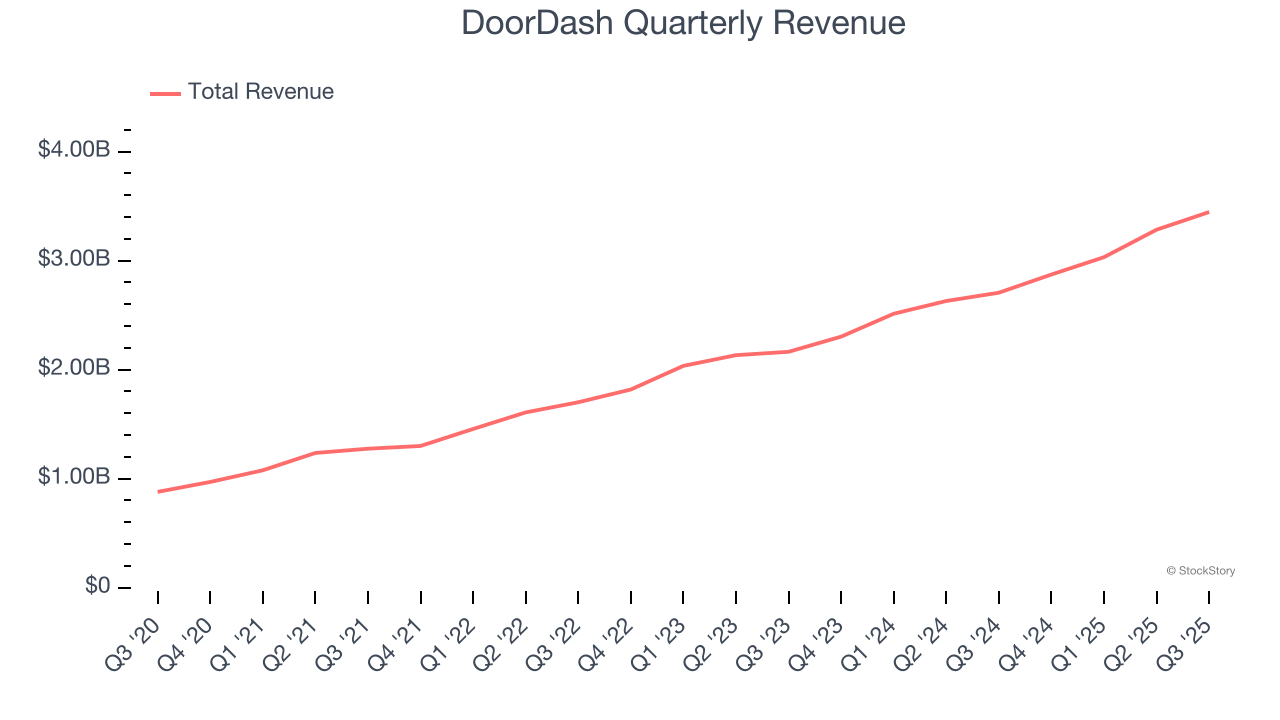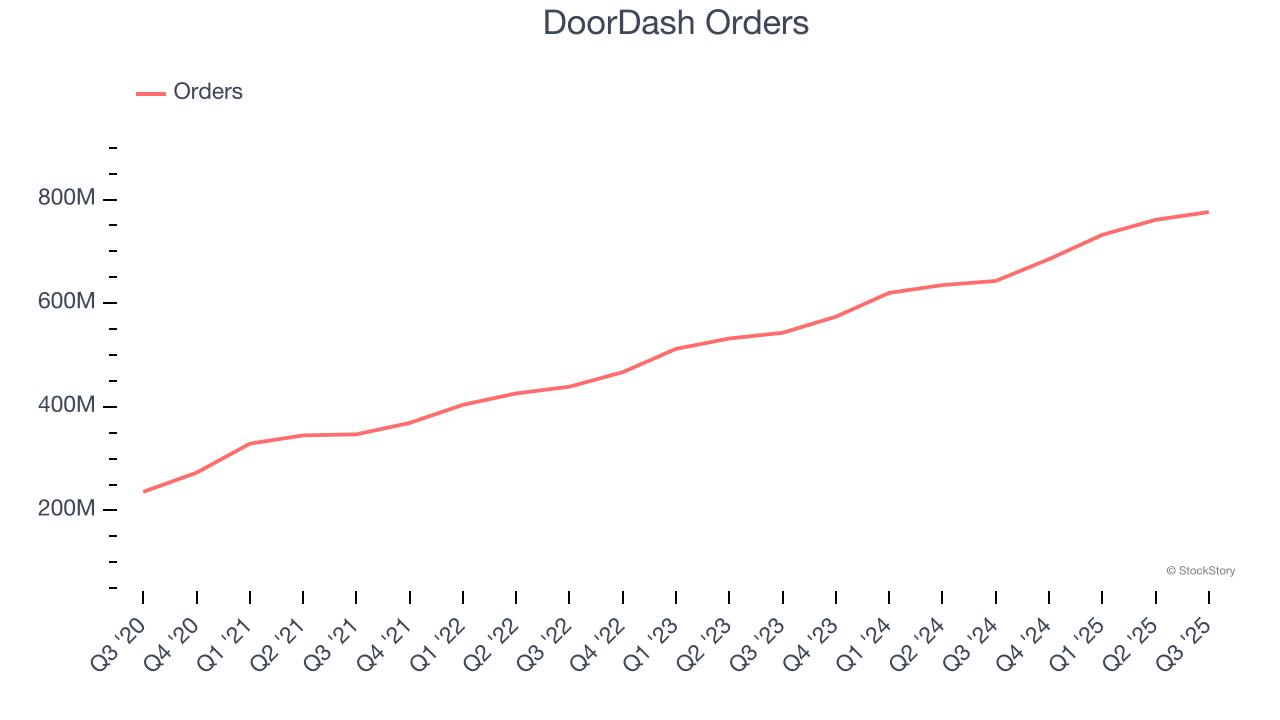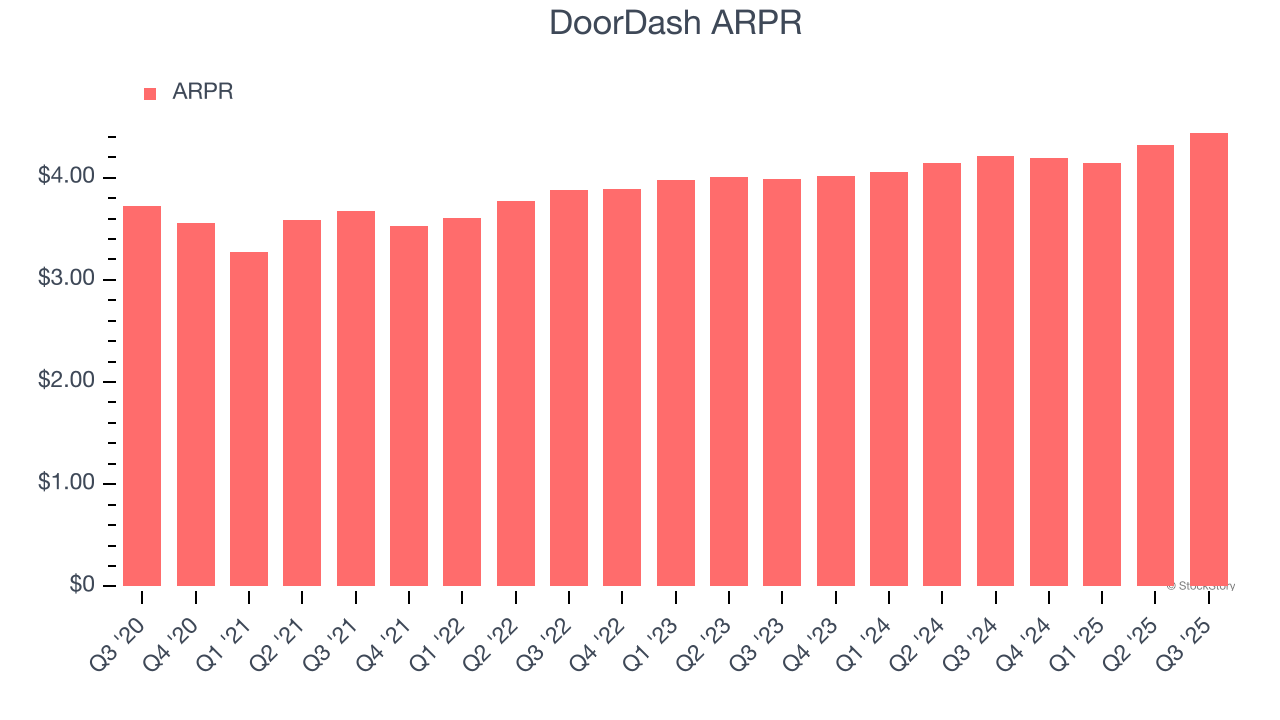
On-demand food delivery service DoorDash (NYSE:DASH) reported revenue ahead of Wall Streets expectations in Q3 CY2025, with sales up 27.3% year on year to $3.45 billion. Its GAAP profit of $0.55 per share was 18.7% below analysts’ consensus estimates.
Is now the time to buy DoorDash? Find out by accessing our full research report, it’s free for active Edge members.
DoorDash (DASH) Q3 CY2025 Highlights:
- Revenue: $3.45 billion vs analyst estimates of $3.36 billion (27.3% year-on-year growth, 2.6% beat)
- EPS (GAAP): $0.55 vs analyst expectations of $0.68 (18.7% miss)
- Adjusted EBITDA: $754 million vs analyst estimates of $749.5 million (21.9% margin, 0.6% beat)
- EBITDA guidance for Q4 CY2025 is $760 million at the midpoint, below analyst estimates of $822.4 million
- Operating Margin: 7.5%, up from 4% in the same quarter last year
- Free Cash Flow Margin: 21%, up from 10.8% in the previous quarter
- Orders: 776 million, up 133 million year on year
- Market Capitalization: $102.5 billion
Company Overview
Founded by Stanford students with the intent to build “the local, on-demand FedEx", DoorDash (NYSE:DASH) operates an on-demand food delivery platform.
Revenue Growth
A company’s long-term performance is an indicator of its overall quality. Any business can experience short-term success, but top-performing ones enjoy sustained growth for years. Thankfully, DoorDash’s 27.7% annualized revenue growth over the last three years was exceptional. Its growth surpassed the average consumer internet company and shows its offerings resonate with customers, a great starting point for our analysis.

This quarter, DoorDash reported robust year-on-year revenue growth of 27.3%, and its $3.45 billion of revenue topped Wall Street estimates by 2.6%.
Looking ahead, sell-side analysts expect revenue to grow 42.2% over the next 12 months, an acceleration versus the last three years. This projection is eye-popping for a company of its scale and implies its newer products and services will spur better top-line performance.
Software is eating the world and there is virtually no industry left that has been untouched by it. That drives increasing demand for tools helping software developers do their jobs, whether it be monitoring critical cloud infrastructure, integrating audio and video functionality, or ensuring smooth content streaming. Click here to access a free report on our 3 favorite stocks to play this generational megatrend.
Orders
Request Growth
As a gig economy marketplace, DoorDash generates revenue growth by expanding the number of services on its platform (e.g. rides, deliveries, freelance jobs) and raising the commission fee from each service provided.
Over the last two years, DoorDash’s orders, a key performance metric for the company, increased by 20% annually to 776 million in the latest quarter. This growth rate is among the fastest of any consumer internet business and indicates its offerings have significant traction. 
In Q3, DoorDash added 133 million orders, leading to 20.7% year-on-year growth. The quarterly print isn’t too different from its two-year result, suggesting its new initiatives aren’t accelerating request growth just yet.
Revenue Per Request
Average revenue per request (ARPR) is a critical metric to track because it measures how much the company earns in transaction fees from each request. This number also informs us about DoorDash’s take rate, which represents its pricing leverage over the ecosystem, or "cut" from each transaction.
DoorDash’s ARPR growth has been mediocre over the last two years, averaging 3.8%. This isn’t great, but the increase in orders is more relevant for assessing long-term business potential. We’ll monitor the situation closely; if DoorDash tries boosting ARPR by taking a more aggressive approach to monetization, it’s unclear whether requests can continue growing at the current pace. 
This quarter, DoorDash’s ARPR clocked in at $4.44. It grew by 5.5% year on year, slower than its request growth.
Key Takeaways from DoorDash’s Q3 Results
It was great to see DoorDash increase its number of requests this quarter. We were also happy its revenue outperformed Wall Street’s estimates. On the other hand, its EBITDA guidance for next quarter missed. This outlook is weighing on shares, and the stock traded down 16.7% to $198.29 immediately following the results.
DoorDash underperformed this quarter, but does that create an opportunity to invest right now? The latest quarter does matter, but not nearly as much as longer-term fundamentals and valuation, when deciding if the stock is a buy. We cover that in our actionable full research report which you can read here, it’s free for active Edge members.
